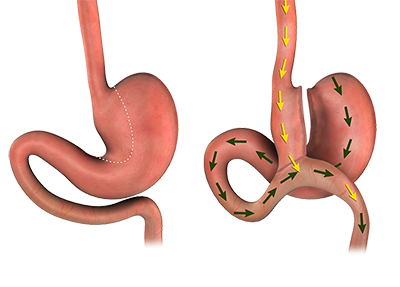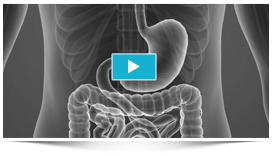Omega Loop Bypass
What is Omega Loop Bypass?
Omega loop gastric bypass is a minimally invasive weight-loss procedure in which a narrow stomach pouch is created by stapling the stomach, and a loop of small intestine is joined to this stomach pouch. This reduces your stomach’s capacity to hold food and reduces food absorption thus leading to weight loss.

Omega Loop Bypass Procedure
Omega loop bypass is performed under general anaesthesia. Your surgeon makes 4 to 5 small keyhole-size incisions through which the whole surgery is performed. A laparoscope (tube with a light and a miniature camera) is inserted through one of the incisions. The camera is connected to a monitor, which allows your surgeon to get a magnified view of the operating field. Surgical instruments are inserted through the other incisions. A narrow vertical stomach pouch is created by stapling the stomach and a loop of small intestine is joined to this stomach pouch.
After the surgery, the stomach pouch can hold only a few ounces of food at a time. The food you eat comes into the pouch and bypasses a large portion of the stomach and the first part of the small intestine before entering the remaining intestine through the loop. As a result, you feel full sooner on eating, you consume less food, and your body absorbs fewer calories helping you to lose weight.
Risks and Complications of Omega Loop Bypass
Like all surgical procedures, omega loop bypass may be associated with certain complications, which include:
- Long-term nutritional deficiency
- Diarrhoea
- Staple line leak which can lead to leakage of gastric contents into the abdomen
- Blood clots
- Formation of ulcers
Advantages of Omega Loop Bypass
The advantages of omega loop bypass include:
- Weight loss of up to 75% to 85 % within 12 to 18 months
- Significant improvement in associated diseases such as type 2 diabetes, high blood pressure, heart disease, venous thrombo-embolism, gout, liver disease, PCOD and joint pains.
- Minimally invasive procedure associated with faster recovery, less post–operative pain, and reduced hospital stay





